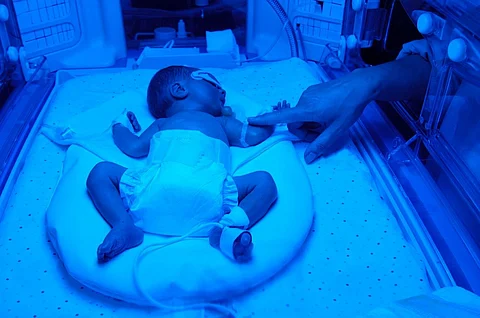MONDAY, Aug. 26, 2024 (HealthDay News) -- In a technical report published online Aug. 26 in Pediatrics, a standardized approach is presented for the use of guideline-concordant phototherapy for the management of hyperbilirubinemia in newborn infants.
Vinod K. Bhutani, M.D., from the Stanford University School of Medicine in California, and colleagues reviewed relevant literature regarding phototherapy devices in the United States to summarize the principles and application of phototherapy consistent with the current 2022 American Academy of Pediatrics clinical guidelines for management of hyperbilirubinemia in newborn infants at ≥35 weeks of gestation.
The researchers found wide variation in the efficacy of phototherapy devices due to nonstandardized use of light sources and configurations and irradiance meters. The most effective and safest devices incorporate narrow-band blue-to-green light-emitting diode lamps, which would best overlap the bilirubin absorption spectrum (wavelength range, about 460 to 490 nm; optimal, 478 nm); emit irradiance of at least 30 µW/cm2/nm in term infants; and illuminate a maximal exposed body surface area of an infant (35 to 80 percent). The appropriate irradiance meter calibrated for the wavelength range delivered by the phototherapy device should be used to perform accurate irradiance measurements.
"When implemented in a timely manner and performed with standardized procedures, phototherapy is a predominantly safe and noninvasive modality that will minimize risk of neonatal brain injury," the authors write.
Abstract/Full Text


